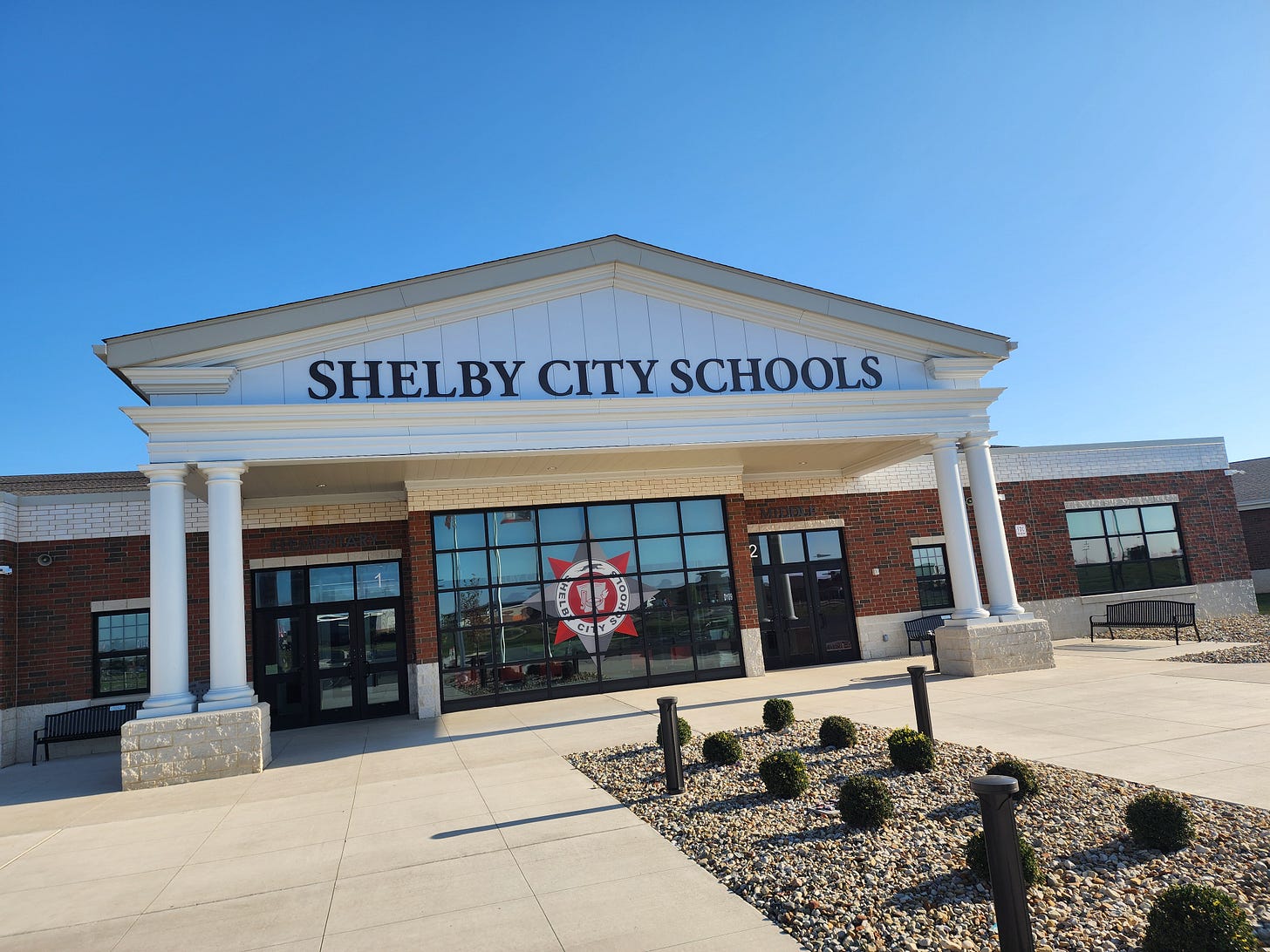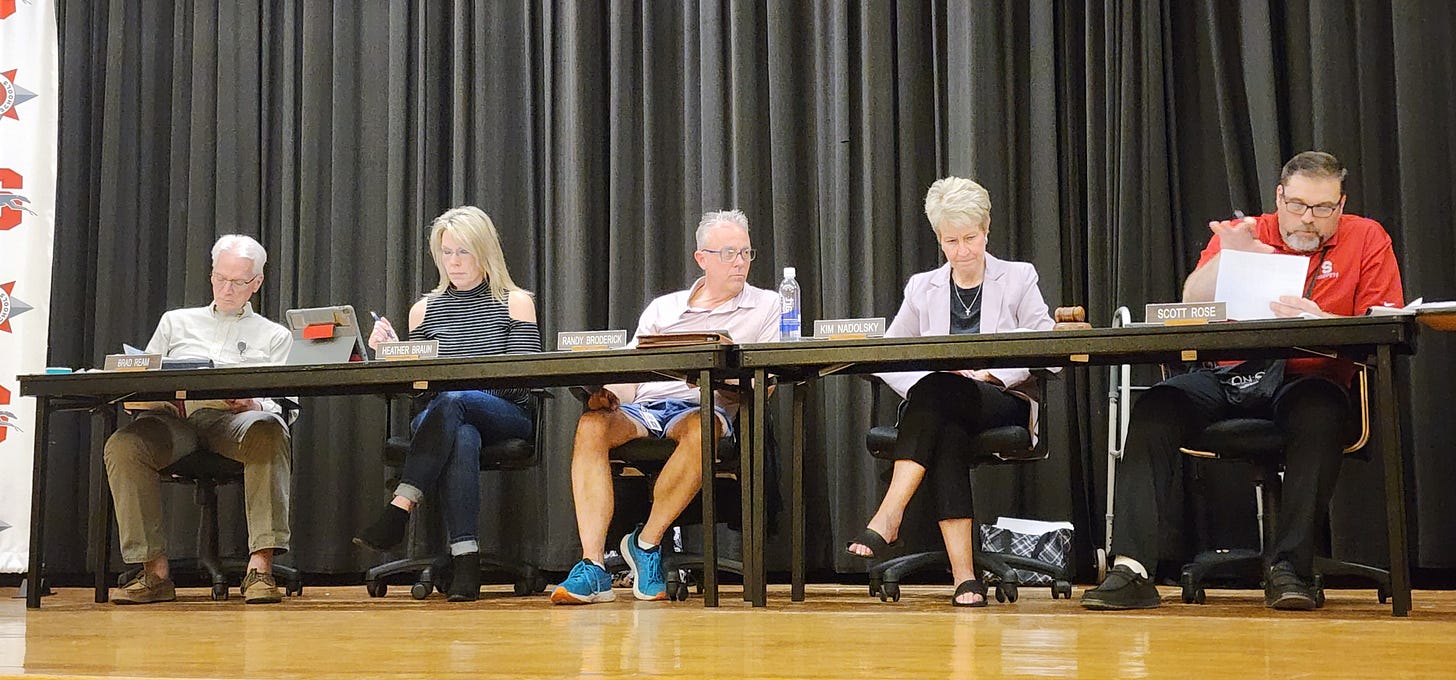Shelby City Schools will begin using a new English and language arts curriculum in grades kindergarten through five starting this fall, part of a state-driven shift to science-based literacy instruction.
The decision to adopt MyView Literacy, a program published by Savvas Learning, was finalized on May 19 by the Shelby School Board and comes with a six-year cost of $266,731.38, with a significant state reimbursement in the works.
“You have probably heard me talk about the science of reading," said Paul Walker, Shelby's assistant superintendent and curriculum director. "That's a big buzz in the state. Governor DeWine is always talking about it. He's definitely been a big proponent of us making changes in the state and focused on the science of reading.”

Walker emphasized that every Shelby teacher has completed the state’s Science of Reading training modules.
“I'm proud to say 100 percent of our staff have gone through the state science of reading modules, and they've all been trained this year,” he said.

Walker explained that the move toward adopting a new curriculum began well before the 2024-25 school year.
"This started a couple of years ago, this whole process where the state was pushing this out, literacy grants and so forth,” he said. “And so our teachers, our administration, top to bottom, we're making changes in our instruction. And along with that comes a material update."
The state provided a comprehensive list of 30 to 40 approved programs and required districts to select one by the end of the 2024–25 school year.
“They give you the autonomy to pick some programs, review them, maybe narrow it down,” Walker said.
Shelby began its review more than a year ago.
“We formed a committee actually at the start of last year in May,” Walker said. “The principals, teachers from every grade level, intervention, Title I -- we looked at multiple programs.”
Presenters from publishers were invited twice, and teachers piloted the final two programs in classrooms.
“Every teacher who was involved in the process was able to have all the materials, try them with their kids, and kind of narrow it down,” he said. “This is where we are with the final selections.”
MyView Literacy by Savvas Learning, he noted, was formerly referred to as Pearson, a well-known educational curriculum provider.

Walker described the challenge of serving all elementary students with one system.
“It's a tough process, K through 5," he said. "There are so many different needs and challenges for every grade level. So, trying to pick something comprehensive for the whole group was the biggest challenge."
The team selected MyView Literacy, which includes authentic texts aligned with the science of reading. “In fourth grade, they have books…embedded in their curriculum. So it's really engaging,” Walker said.
A site visit to Buckeye Local Schools in Medina County helped confirm the choice. “The kids in the classroom like the literature that's involved.”
But Walker stressed that the curriculum is only one part of the equation.
“It always still comes back to the teacher," Walker said. "You can have the best book sitting there. But if the teacher's not excited about it and telling the kids this is the best thing and questioning and getting the answers and making corrections and feedback, then it could be dead in the water.”
He added, “That's one thing about our teachers. Our teachers have been really good about taking anything and making it great.”
The curriculum is aligned with the science of reading and includes core instructional components.
The official debut is planned for the start of the 2025-26 academic year.
Walker said the shift to a common, structured K–5 program is a milestone for the district.
“This is really a first time in a long time that Shelby schools has had kind of a comprehensive K–5 curriculum. We've kind of piecemealed it for all these years," he said. "The state has been really adamant that every school district in Ohio has had to pick something from that list."
Teachers will begin training immediately. “So we're on board and ready to go for next year,” Walker said.
“Anytime you have curriculum, you just can't say, 'Here, go teach it.' The professional development piece, that's the key,” he said, noting coaching sessions and feedback. Online programs are also available for students who are struggling or advanced through independent practice.
"It's adaptive," Walker said. "They can get on their Chromebook and practice their reading skills, and it will meet them where they are. "
Walker emphasized the value of collaboration that comes with the transition.
“So we're excited for this, and I think no matter what, when you bring in new curriculum and it gives teachers a chance to collaborate and talk about reading instruction," he said. "That's what we're here for."
Shelby school board president Scott Rose praised the extensive process. “What a lot of time and effort you guys put into that,” he said. “I'll say that. Something like this, you don't necessarily just wake up one day and say, 'Oh, we're going to do this.'”
Rose pointed to the importance of teacher input. “There's nothing worse that frustrates people than when you're a professional and somebody doesn't get your opinion," he said.
Walker credited the staff for staying engaged.
“They were there at every meeting. Every step along the way, they were willing to ask a hard question,” he said. “They might not all completely agree with every component of it. But they're willing to do what's best for the greater good and dig in.”
He continued: “We're going to find ways to beef things up if maybe it falls a little short in an area for our students.”
"And that's the thing, there's no magic book you can hand out and say, 'Well, this is going to cover everything.' So we're going to give our teachers as many tools as possible to be successful with our students,” Walker said.

Walker offered an audio-visual presentation and had a bag full of the new student workbooks for Shelby school board members to review.
Shelby school board Vice President Kim Nadolsky, a retired teacher, noted the benefits of such a comprehensive workbook.
Walker agreed.
“That's kind of the idea. Keeping everything in one place. It's going to give the teachers more time to think about the instruction versus having to plan everything," he said. "So they can think about how we can best instruct our students with these materials versus always trying to search for different things.”
While the district has already received some state funding toward the purchase, it also applied for a comprehensive grant.
“We haven't heard yet. They're working through that. So if that will come along, that would be icing on the cake,” Walker said.
AT A GLANCE
What is the science of reading?
“Science of reading” means an interdisciplinary body of scientific evidence that:
-- Informs how students learn to read and write proficiently.
-- Explains why some students have difficulty with reading and writing.
-- Indicates that all students benefit from explicit and systematic instruction in phonemic awareness, phonics, vocabulary, fluency, comprehension, and writing to become effective readers.
-- Does not rely on any model of teaching students to read based on meaning, structure and syntax, and visual cues, including a three-cueing approach.
Source: Ohio Department of Education and Workforce

Reporter David Jacobs can be reached at davidjacobs@shelbynewsreporter.com




